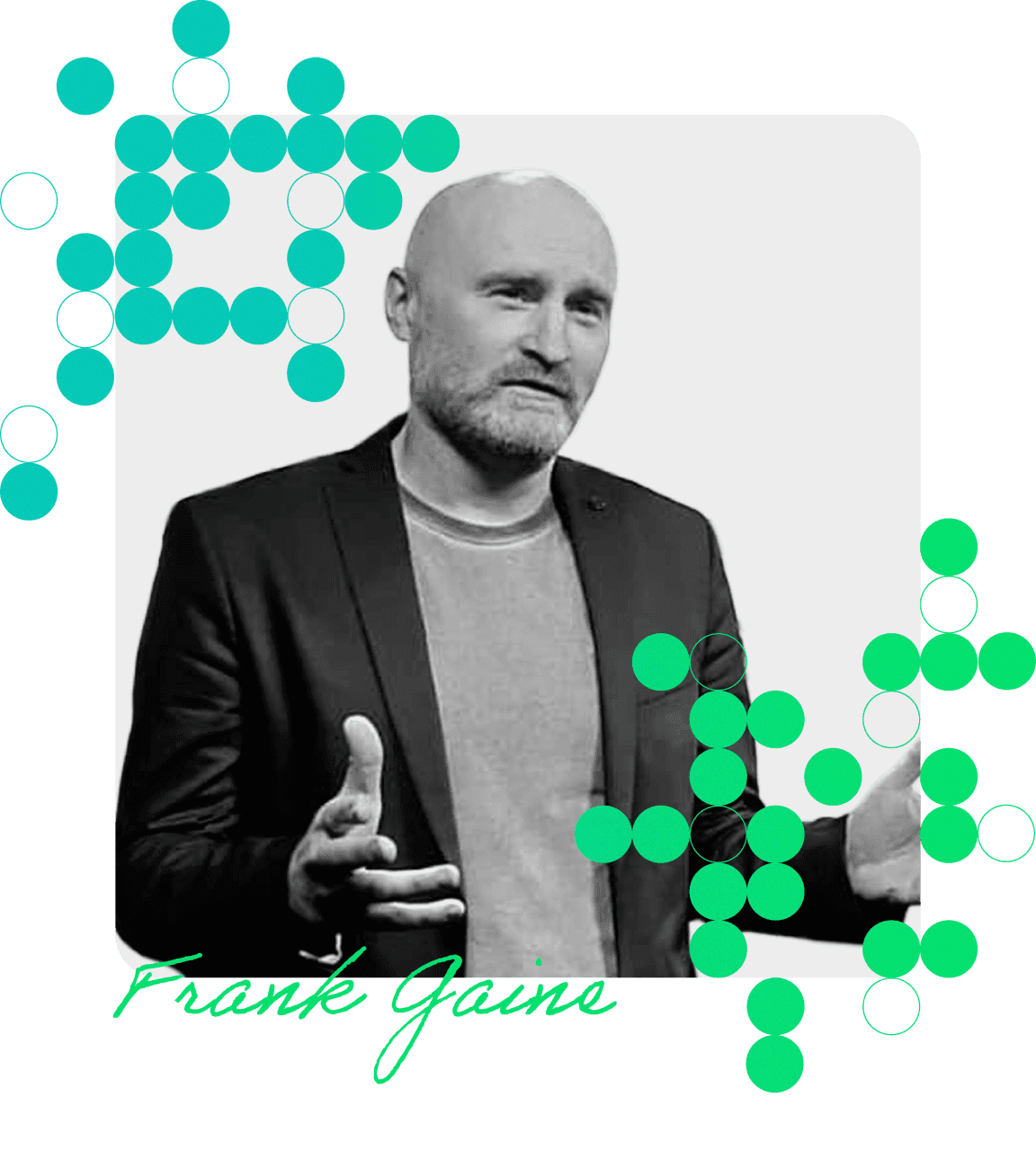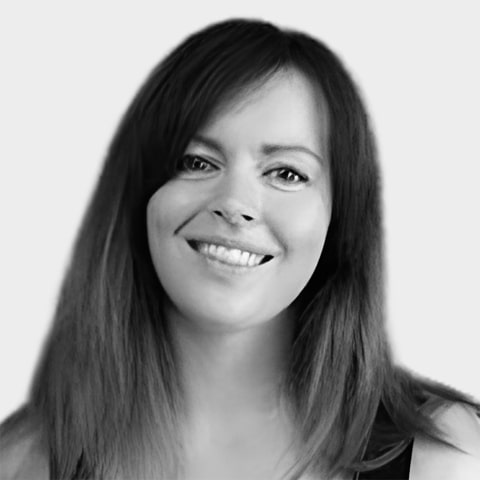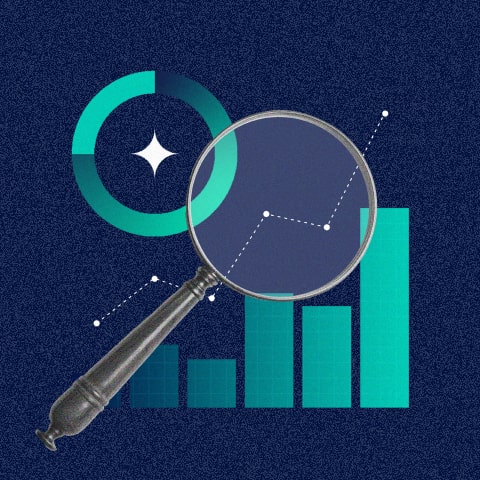Frank Gaine has led UX and usability projects for some of the biggest brands in the UK and Europe, integrating business goals and user needs into a wider design process, and contributing to a better customer experience in the process.
His portfolio is wide and varied, spanning not just a variety of industries, but also a variety of media – not confined to web or mobile – he has also designed solutions for in-store (kiosks), in-car (satnav units) and in-hand (the digital interface to complement physical mobile phone form and shape). His breadth of experience gives him a unique perspective on design in all its forms, one that he continues to hone and develop in his latest role as Head of Digital Experience in Smartbox.
Starting out in the early 2000s as an intern at a design consultancy in Dublin, his grounding in usability testing and research gave him a solid base that opened up opportunities in the UK where there was a bigger work pool for designers like himself. He headed to London to gain experience of freelance life and found the articles on design he had written and published on his former employer’s highly respected design blog gave him a visibility that provided a springboard for his career. In his own words “putting yourself out and visible is one way of getting noticed.”
Somewhat modestly Frank also cites the very different marketplace back in the early aughts – there were fewer human-centered designers plying their trade and the companies who needed it usually had strategically-important requirements.
“If you were one of the only ones to do it, you had a better chance to do it. Now, there’s lots of well-qualified designers. And I think I was lucky.”
By working alongside other agencies and consultancies Frank contributed to some of the most innovative and important design projects of that period. “As a freelancer, I got some great experience. I did research and interaction design for Boots, O2, Land Rover, Argos, Mazda – their car configurator, Eurostar – the checkout process and Waitrose – content categorization.
“One of the first things I was involved in was designing the Argos in-store kiosk. You know the one – you go up with your number and you order it and you sit down and you wait for it to be delivered.” Twenty years later the learning from that job still resonates with Frank, because the insight phase guided the hypotheses phase so strongly “The context of use is different… people are standing up while they use a kiosk, they might have kids or shopping bags with them, the setting is in public, there might be a queue.”
“When I delivered training for the UX Design Institute, I used to always say to students that two acronyms will be tattooed on their retinas by the end of the course – UUE and RDE. UUE stands for useful, usable and engaging. RDE stands for research, design and iterative evaluation.”
Play audio clip
(0:59)
The start of Frank’s career coincided with a tectonic plate shift in design as technology was maturing at pace, the internet was becoming more established, and ambitious brands who wanted to pursue the opportunities opened up by these changes needed designers who understood this rapidly-changing environment to create effective interfaces. While the UX industry was in its infancy (even at the time, Frank would have used the term usability rather than user experience), larger organisations understood the importance of using emerging innovative methods to ensure the user’s voice was heard as part of design.
“I led a huge card sort exercise for Waitrose right across the UK. At the very start of their online presence, they wanted to find out how to categorize 40,000 products that they would have on their online store. And was that going to be different to the mental model of how people think about buying in a physical store. That was really interesting.”
Although each job has had different characteristics, the processes and principles of design have stayed the same and to this day provide the foundation of Frank’s work.
“I had Jakob Nielsen’s 10 usability heuristics printed out and laminated on my desk. If I was asked to review anything, I’d firstly revise the principles of a good interface.”
The importance of those foundational principles and others like them inspire Frank to this day.
“When I delivered training for the UX Design Institute, I used to always say to students that two acronyms will be tattooed on their retinas by the end of the course – UUE and RDE. UUE represents how you define a good user experience. RDE is about how you go about achieving that. UUE stands for useful, usable and engaging. RDE stands for research, design and iterative evaluation.”
Frank gravitated towards jobs that were different, interesting and that he could put his mark on. One such job was working on the Branded Devices team for O2 in the years just before the arrival of the touchscreen smartphone, when companies could really differentiate with the form factor and the interface of a phone.
At the time O2 was known for business-oriented devices and they wanted to move into consumer devices. The ambition was to create consumer phones where the form factor and the interface worked in harmony to create a compelling product.
“We created three devices at my time there – the battery-busting O2 Jet, which was a competitor to the legendary Nokia 6310, the stylish O2 Ice, which was the slimmest consumer 3G handset of its day, and then the music-focused O2 Cocoon which was launched around the same time as O2’s tenure at the Millennium Dome began. This was a nifty device with a hidden LED display and the ability to dock in its own nest beside your bedside or on your desk.”
“It was not only about being able to produce design work, but the process we employed to bring people together and form a common understanding of problems. A lot of this was to do with visualization.”
Play audio clip
(0:14)
He quickly learned the value of close collaboration with colleagues of complementary skills – he worked directly with an engineer and an industrial designer in a process that allowed him to influence not only the interface but also the physical form of the handsets.
From there, Frank moved to Vodafone Group who centralized the UX design functions across its 24 operating companies and happily they embraced a lot of the approaches adopted by the UK team. His five years at Vodafone began with an opportunity to get involved in something memorable – creating a mobile TV app – basically “the ability to watch TV on an N95” according to Frank. Again, something different, and at the time as he reflects, “A big deal.”
Not for the first time, Frank’s compass oriented towards collaboration.
“The value brought about by my team was realized pretty quickly. It was not only about being able to produce design work, but the process we employed to bring people together and form a common understanding of problems. A lot of this was to do with visualization.
“I found an idle A0 printer on one of the floors at Vodafone HQ which allowed me to print out complex flows and interface ideas in detail. Pinning this to the wall in a collaboration zone allowed us to bring people together and get everyone on the same page. We could visualize the systems that needed to talk to each other to change channel or to retrieve payment information. Design is a facilitator of understanding and decision-making.”
Frank is clear that being a good designer includes being a good business person – not falling in love with artifacts or focused around making an interface prettier, but rather digging down to user goals and business needs. A designer with a business head can give a unique and valuable perspective when collaborating with other stakeholders.
His experience with O2 sparked an interest in the relationship between physical form and digital interface design, one which he was able to put to good use during his time with TomTom where he worked in the non-map team (non-map includes elements such as settings, favorites and display).
“Ironically, TomTom is based in Amsterdam where very few people drive. To test the interface on a device we had to book one of the pool cars and drive around the suburbs of Amsterdam, testing the interface. Even though my focus was the digital interface, inevitably the field research would highlight other design matters. On one of those sunny days in Amsterdam, we found that the plastic of the screen was too reflective. All I could see was the reflection of my head in the display. This is something we were able to feed back to the hardware guys.”
“We could visualize the systems that needed to talk to each other to change channel or to retrieve payment information. Design is a facilitator of understanding and decision making.”
Play audio clip
(0:15)
On another occasion a trip to the customer care center speaking to managers and listening in on calls helped Frank better understand some key causes of users requiring support.
“Can you imagine that people were calling in about not being able to turn their device on and off? A combination of the physical switch and interface feedback was causing an issue. Again, something we were able to resolve in the device we were working on, saving customer frustration and costly call center time.”
These quality insights and understanding of user problems were fed back to the appropriate teams who planned the updates within an agile process, guided from the start by insight.
“TomTom ran a very sophisticated, agile development process – some of the best practice I’ve ever seen. We had one year to take what was a proprietary navigation system and migrate that to Android. It was a complete re-platforming, redesigning of the entire thing. Design prepared their work a couple of weeks in advance of the dev team who would then draw down that piece of functionality.
“I think it’s very important in agile that there’s a good sprint zero at the beginning of that process. If you don’t know where you’re going from the outset, it’s almost like laying the track in front of you as you go, and you better be sure that you’re heading in the right direction. Sprint zero allows you to think about the overarching themes, the overarching design philosophy and the paradigms that you’re going to use.”
In 2013, while still in Amsterdam, Frank saw a gap in the market and launched a career platform for his industry UXswitch, “by UXers for UXers”. As he puts it himself – “Necessity is the mother of all invention.”
Born of the disconnect between work opportunities available and what UXers want to do with their career, UXswitch provided a go-to for employers to recruit UXers. The venture had the approval of the UX community it was trying to provide for but commercially it didn’t meet the heights of Frank’s ambition and he sold the business on after six years. He reflects on it as a learning experience and an opportunity to network and connect with the community. “It was a great endeavor.”
Frank’s interest in the intersection of design and innovation brought him back to Dublin as Head of Product Design for Mediahuis New Ventures – the Belgian media company’s accelerator unit to create new services.
“It pulled together a lot of threads in my career about start-ups, innovation and thinking about opportunities for the customer and the business. Just before Mediahuis bought Independent News and Media, we had been set up as the Group’s accelerator unit. With the future of newspapers being a challenging one, INM decided to see what other digital business ventures they could create to diversify their portfolio. The aim was to use the reach of their well-known brands (for example The Irish Independent and Belfast Telegraph) and their core capabilities to see what else would be a profitable business for the Irish market.
“We were given a huge level of freedom to explore what we thought were appropriate avenues for the business to pursue. We completed research, presented ideas, gained approval to test them in the market, and then sought further investment based on the results. It was as much a full-on strategy role as a design role. We launched three businesses in that period of time. Choosy, a price comparison website. Learning Force, an online learning platform. And Jellow, a platform for recruiting freelancers.”
A change in strategy by Mediahuis meant the decommissioning of that team and for Frank a move to Smartbox, which is in the business of gift experiences. “I’m heading up digital design at Smartbox, the experience gifting company. They sell over 7 million experience gifts per year. My team and I ensure that our digital touch points, both customer facing and internal, are commercially effective and a delight to use.”
Twenty years on, trends have come and gone, technology has matured beyond recognition and the industry is significantly larger, but Frank’s customer-centred principles are as timeless as they have always been. Maybe it’s not so much the case that the projects made Frank; maybe it’s more that Frank made the projects.
























